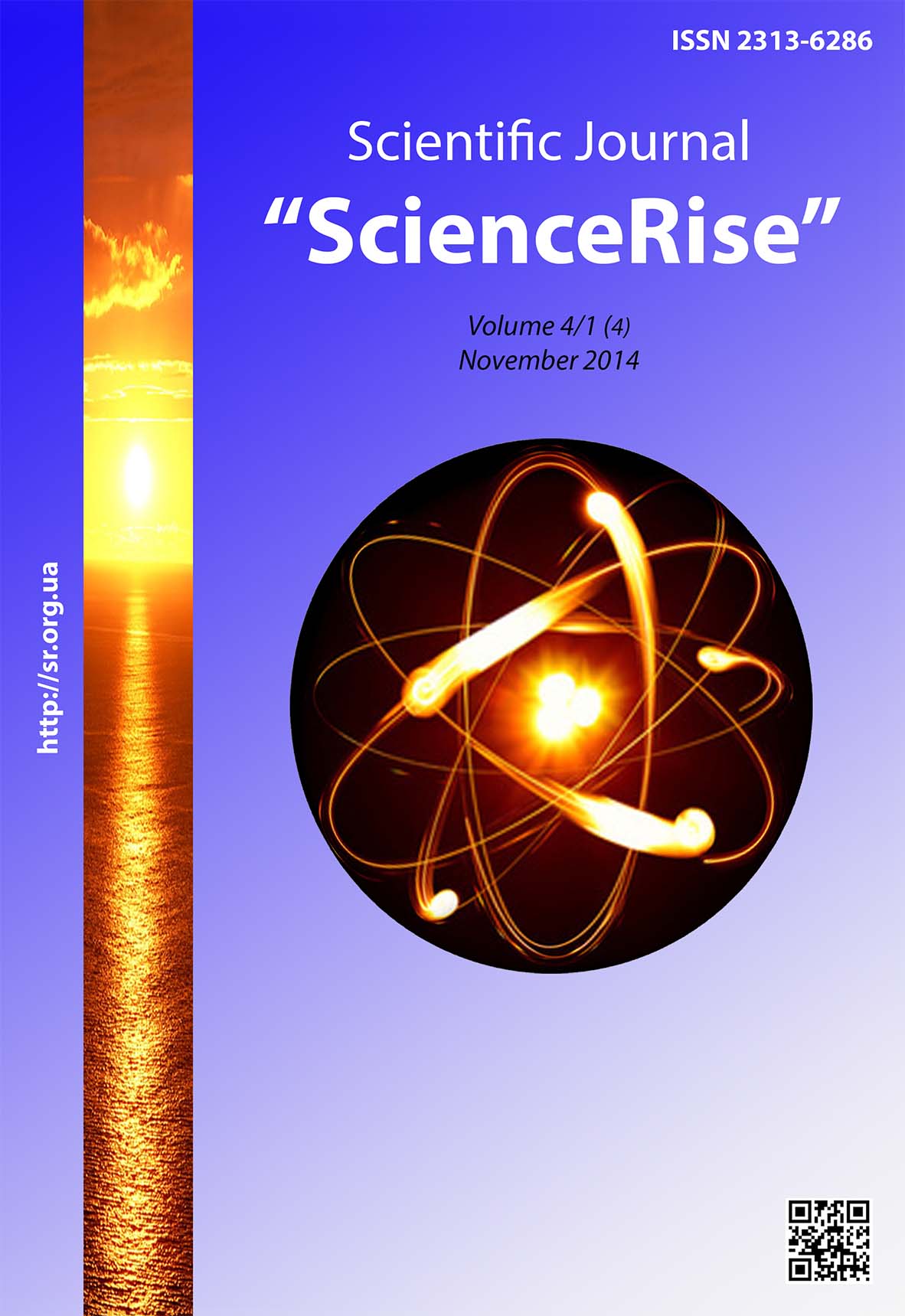The importance of qualitative composition for crystalloid solutions used in obstetric practice
DOI:
https://doi.org/10.15587/2313-8416.2014.28585Keywords:
crystalloids, balanced salt solutions, infusion therapy, water sectors of organism, pregnancy, childbearingAbstract
There were examined 70 women. The influences of normal pregnancy on the water sectors and their changes under the influence of crystalloid fluid used in infusion therapy of uncomplicated peripartum period are studied. It was established that rapid normalization of water areas and sectors in the postpartum period takes place on the background of tinfusion of a balanced salt solution (Sterofundin) compared with an unbalanced 0,9 % Sodium chloride solution.
References
1. Cherniy, V. I., Kabanko, Т. P., Balatsko, V. S., Agafonov, Y. N. (2008). Yatrogenniye oslojneniya infusionnoi terapii u bolnih, nahodyashihsya v kriticheskih sostoyaniyah [Iatrogenic complications of infusion therapy in patients who are in critical conditions]. Ukrainian Journal of Surgery, 1, 47–50.
2. Ickx, B. E. (2010). Fluid and blood transfusion management in obstetrics. European Journal of Anaesthesiology, 27 (12), 1031–1035. doi: 10.1097/eja.0b013e32833c30e3
3. Astakhov, Al. A., Astakhov, A. A. (2007). Infusii pri kriticheskih sostoyaniyah v anestesiologii i reanimatologii: uchebnoe posobie dlya anestesiologov i reanimatologov [Infusion in critical conditions in anesthesiology and resuscitation : a manual for anesthesiologists and emergency]. Chelyabinsk, 64.
4. Livanov, G. A., Lodyagin, A. N., Nikolaev, I. P. Batotsyrenov, B. V. (2008). Diagnostika i lechenie legochnoiy gipergidratatsii u bol’nih v kriticheskom sostoyanii s ostrimi otravleniyami veshestvami neyrotropnogo deystviya [Diagnosis and treatment of pulmonary fluid overload in critically ill patients with acute poisoning substances neurotropic] Anesthesiology and Intensive Care, 6, 27–30.
5. Galushka, S. V., Nazarov, B. F., Vlasenko, A. V., Mescheryakov, G. N., Mitrohin, A. A. (2003). Otsenka disbalansa vodnih sektorov u bol’nih s gestozom [Evaluation of the imbalance of water sectors in patients with preeclampsia]. Anesthesiology and Intensive Care, 6, 35–38.
6. Pavlova, T. A., Kamenev, E. A., Grigoriev, E. V. (2008). Prognosticheskaya znachimost’ pokazateleiy kislorodnogo transporta i vodnih prostranstv pri tyazholoiy sochetannoiy travme [Prognostic significance in oxygen transport and water areas with severe concomitant injury] General reanimathology, ІV (6), 16–20.
7. Podolsky, Y. S., Hapiy, I. Kh. (2009). Narushenie vodnyh sektorov u rodilnits v eclampsicheskoj come [Violation water sectors in parturients in eclamptic coma]. Anesthesiology and Intensive Care, 2, 185–186.
8. Veale, W. N. Jr., Morgan, J. H., Beatty, J. S. (2005). Hemodynamic and pulmonary fluid status in the trauma patient : are we slipping? The American Journal of Surgery, 71 (8), 621–626.
9. Wilson, M. Davis, D. P., Coimbra, R. (2003). Diagnosis and monitoring of hemorrhagic shock during the initial resuscitation of multiple trauma patients. Journal of Emergency Medicine, 24 (4), 413–422. doi: 10.1016/s0736-4679(03)00042-8
10. Theunissen, I. M., Parer J. T. (1994). Fluid and electrolytes in pregnancy. Clinical Obstetrics and Gynecology, 37, 3–15.
11. Zander, R. (2009). Fluid Management. Melsungen : Medizinische Verlagsgesellschaft mbH, 124.
siz" �.p�h��ight:150%;font-family:"Times New Roman","serif"; mso-ansi-language:EN-US'>8. Veale, W. N. Jr. Hemodynamic and pulmonary fluid status in the trauma patient : are we slipping? [Text] / W. N. Jr. Veale, J. H. Morgan, J. S. Beatty // The American Journal of Surgery. – 2005. – Vol. 71, Issue 8. – P. 621–626.
9. Wilson, M. Diagnosis and monitoring of hemorrhagic shock during the initial resuscitation of multiple trauma patients. A review [Text] / M. Wilson, D. P. Davis, R. Coimbra // Journal of Emergency Medicine. – 2003. – Vol. 24, Issue 4. – P. 413–422. doi: 10.1016/s0736-4679(03)00042-8
10. Theunissen, I. M. Fluid and electrolytes in pregnancy [Text] / I. M. Theunissen, J. T. Parer // Clinical Obstetrics and Gynecology. – 1994. – Vol. 37, Issue 1. – P. 3–15. doi: 10.1097/00003081-199403000-00005
11. Zander, R. Fluid Management [Text] / R. Zander. – Medizinische Verlagsgesellschaft mbH, Melsungen, 2009. – 124 р.
Downloads
Published
Issue
Section
License
Copyright (c) 2014 Владислав Анатольевич Сединкин, Елена Николаевна Клигуненко

This work is licensed under a Creative Commons Attribution 4.0 International License.
Our journal abides by the Creative Commons CC BY copyright rights and permissions for open access journals.
Authors, who are published in this journal, agree to the following conditions:
1. The authors reserve the right to authorship of the work and pass the first publication right of this work to the journal under the terms of a Creative Commons CC BY, which allows others to freely distribute the published research with the obligatory reference to the authors of the original work and the first publication of the work in this journal.
2. The authors have the right to conclude separate supplement agreements that relate to non-exclusive work distribution in the form in which it has been published by the journal (for example, to upload the work to the online storage of the journal or publish it as part of a monograph), provided that the reference to the first publication of the work in this journal is included.

